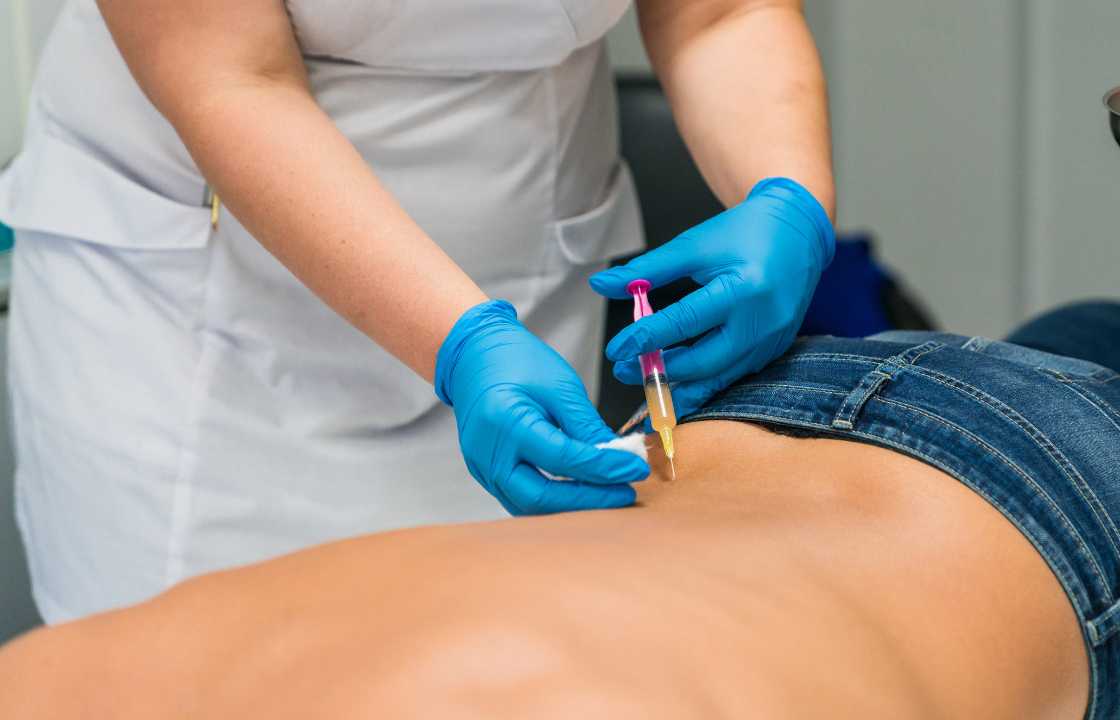Insight
Back Pain: What you can expect from Steroid Injections
Many individuals dealing with back pain are familiar with the routine: time is often the ultimate healer for this ailment. Over the course of weeks to months, the pain tends to subside, allowing a gradual return to normal life. During this period, maintaining as much activity as possible and relying on over-the-counter pain relievers can be beneficial, potentially avoiding the need for cortisone shots, medically referred to as corticosteroid injections.
However, for some individuals, particularly those experiencing back pain due to irritated spinal nerves, these conservative measures may not provide relief quickly enough. After a few weeks, even simple tasks like walking to the bathroom may become challenging. In such cases, a cortisone injection may be proposed to alleviate the discomfort in the lower back.
Despite the potential benefits, guidelines caution against hasty intervention with cortisone shots, even for nerve-related back pain. Dr. Robert Shmerling from Harvard Medical School emphasizes a preference for less invasive and less aggressive approaches initially. Cortisone shots are often considered a temporary measure for symptom control rather than a definitive treatment for most conditions, he notes.
Injection targets
When used appropriately, cortisone shots can effectively alleviate inflammation in joints and tissues, although they do not expedite the healing process or prevent future issues. Here are some of the most common targets for corticosteroid injection therapy:
1. Epidural space: Epidural injections target the area around the spinal cord where nerve “roots” exit and extend to other parts of the body. This area near the nerve roots can be a source of low back pain, such as sciatica.
2. Tendons and bursae: Cortisone shots are utilized for tendinitis, which involves inflammation of a tendon—the tough, fibrous cord of tissue connecting muscle to bone. Steroids may also be employed to reduce inflammation in an inflamed bursa, a cushioning pad of tissue that lessens friction between muscles and tendons as they move across bones and other joint structures (bursitis).
3. Joints: Cortisone injections may be administered into a joint to alleviate inflammation associated with arthritis. Common targets include the knee and the facet joints in the spine.
What is conservative therapy?
Cortisone shots are not typically recommended for routine strain-and-sprain backaches. Orthopedic specialists usually reserve them for cases involving shooting nerve pain (such as sciatica) from a ruptured disk or symptoms associated with the narrowing of the space around the spinal cord (spinal stenosis).
Even in cases of nerve-related back pain, it is advisable to explore conservative treatment options first, as cortisone shots carry certain risks. Conservative therapy may include the following:
1. Pain control: Begin with acetaminophen (Tylenol) or nonsteroidal anti-inflammatory drugs (NSAIDs) like ibuprofen (Advil, Motrin) or naproxen (Aleve). If these are ineffective, consult your doctor about alternative medications for nerve-related pain or muscle spasms.
2. Maintain activity: Keep moving to the extent that you can manage. While short periods of bed rest may be beneficial during the acute phase, prolonged bed rest is generally discouraged.
The decision on when to consider injection therapy depends on the intensity of the pain and how long it persists before showing signs of improvement. Most individuals experience significant improvement within six to eight weeks. It’s crucial to discuss the timing and necessity of cortisone shots with your healthcare provider, taking into account the duration and severity of your symptoms.
How cortisone shots work
Steroid injections typically consist of various formulations of medications, and a common combination includes a numbing drug similar to procaine (Novocain) along with the anti-inflammatory drug cortisone.
Upon administering the cortisone injection, the numbing effect initiated by the numbing agent tends to wear off within hours. Dr. Shmerling notes that as the numbing agent loses its effect, there might be a temporary return of pain. Subsequently, individuals can anticipate experiencing any potential benefits from the injection approximately 24 to 48 hours after the procedure.
What to expect from a cortisone injection
While the relief provided by a cortisone shot can be greatly appreciated if it proves effective, it’s important to note that success is not guaranteed. Studies involving large groups of individuals with back pain have shown that, on average, the benefits of corticosteroid injections are small to nonexistent. Predicting the individual experience can be challenging.
It’s crucial to understand that corticosteroid injections do not alter the course of a chronic back pain condition. In the long term, individuals who receive the injection are likely to end up in a similar condition as if they had not received the shot. However, in the short term, the injection may offer relief and alleviate discomfort. The decision to pursue cortisone shots should be made with a clear understanding of both the potential short-term benefits and the limited impact on the overall course of chronic back pain.
Steroids shots have risks
While harmful side effects of cortisone injections are uncommon, they do occur, and it’s important to be aware of potential risks. The primary risk is infection, which happens in less than 1% of cases. Less frequently, the needle used for the injection may injure a nerve or blood vessel.
Repeated injections in the same target area can lead to the breakdown of nearby tissues, such as joint cartilage. Additionally, corticosteroids can cause thinning of the skin at the injection site or the soft tissue beneath it. To mitigate these risks, it is generally recommended to limit the number of cortisone injections to three or four per year in any treated body region. This precaution helps minimize the potential for adverse effects on surrounding tissues.

